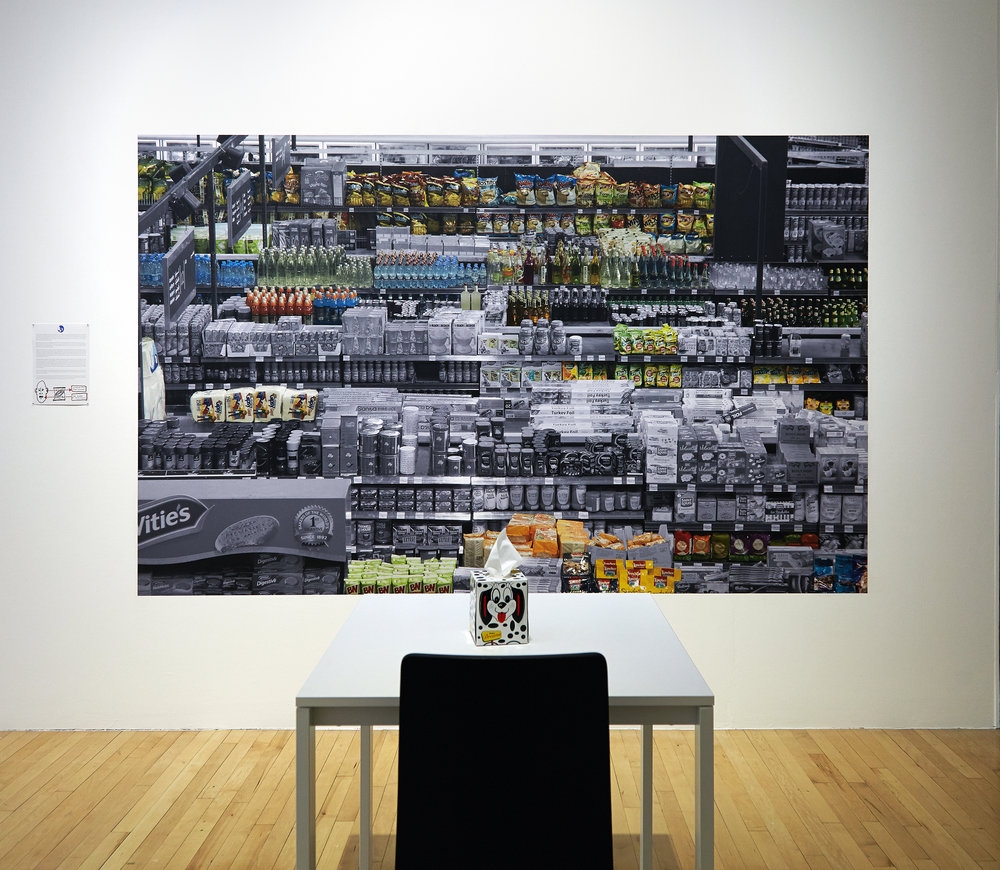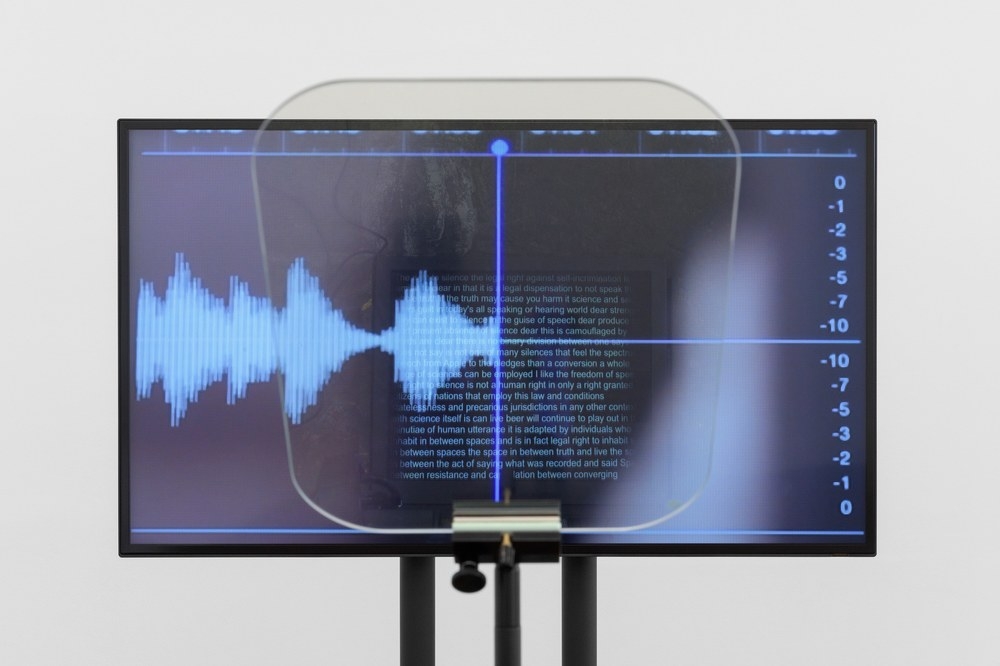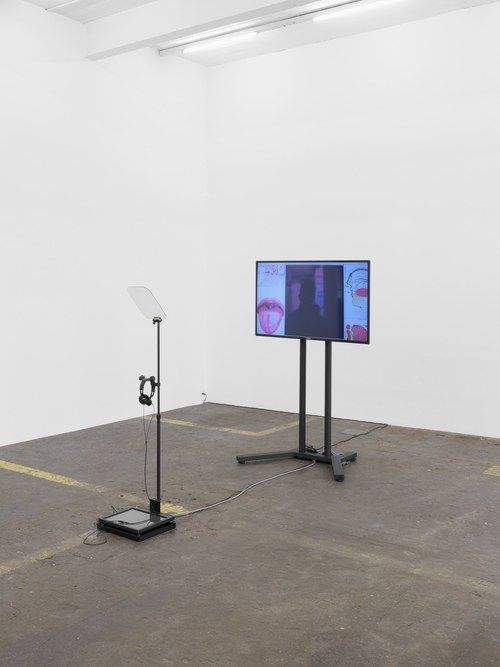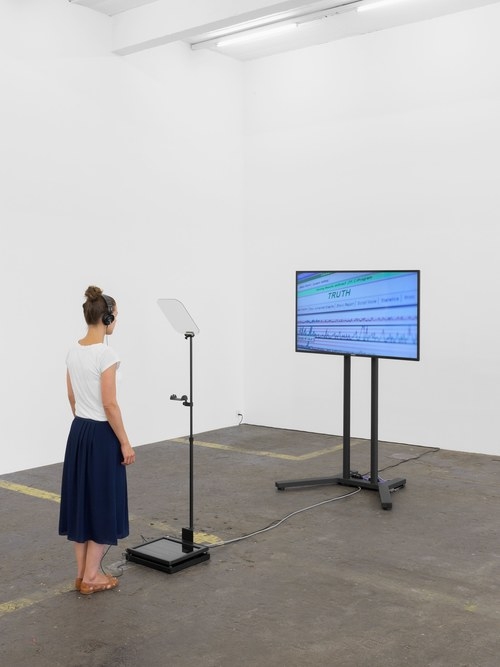A Convention of Tiny Movements & Shudder the Thought, Installation view, 2015
A Convention of Tiny Movements, 2015
When your voice is propelled from your mouth through the air, it hits the objects in your vicinity and causes tiny vibrations on the surfaces of those objects. At the Massachusetts Institute of Technology, a group of computer scientists have discovered that by video recording an object using high speed cameras they can extract those minute vibrations and recover the sound that produced them. This gives them the ability to turn many everyday objects such as, a packet of crisps, a glass of water, a potted plant, and a box of tissues—into a listening device, or what they call visual microphones.
Although this technology is not yet implemented by the NSA, GCHQ and other spying agencies, this blown up photograph of a super- market is an index of all the objects (shown in colour) that can, to date, be successfully used as sound recording devices. Inversely the black and white sections of this photograph operate as a map that reveals all the objects that cannot yet be used as microphones and therefore show the blind or silent spots of this technology.
The objects that are shown in colour are able to listen to you and record your voice yet they will never give a crystal clear quality of sound reproduction; due to their individual material form, each of these objects has its own way of hearing the world and colouring the recording it makes. For the inventors of this technology the most perplexing and intriguing part of this discovery is the texture that each object adds to a recording and they think of it as each object’s individual voice. They know that the future of surveillance will be recording our voices using the minute vibrations of the objects that surround us, but a future yet to be imagined will come from listening closely to what the objects themselves have to say.
Abu Hamdan’s unique commission for the Armory show is a work of near future fiction in which the artist presents a world where all objects are able to listen to your every word. A Convention of Tiny Movements is a project comprised of an audio dispatch from 2017 presented in a whisper cube, a series of amalgamated objects distributed throughout the fair, and a specifically designed set of 5,000 potato chip packets.
This collection of works warns us of increasing surveillance, but also for the first time allows us to hear the world from the perspective of objects — a new way of hearing our world that breaks down that all-too-tidy divide between the subject and object.
Contra Diction : Speech Against Itself, 2015
Contra Diction : Speech Against Itself, 2015
In this work Abu Hamdan seeks to explore the ways in which our right to silence can be preserved in today’s All-Hearing and All-Speaking society. In his reappraisal of silence and its politics Abu Hamdan will look into the linguistics of Taqiyya, an old piece of islamic jurisprudence practiced only by esoteric minorities that allows a believing individual to deny his faith or commit otherwise illegal acts while they are at risk of persecution or in a condition of statelessness. By looking into stories of alleged mass conversions of the Druze minority in northern Syria Abu Hamdan indicates how such minor speech acts can help us re-appraise the precision of speaking, the multiple ways of remaining silent and the inherently unfaithful nature of ones voice.
This work was made with the creative production and video direction of Nesrine Khodr and exists both as a live audio essay and most recently as a 2 channel video installation pictured below.



